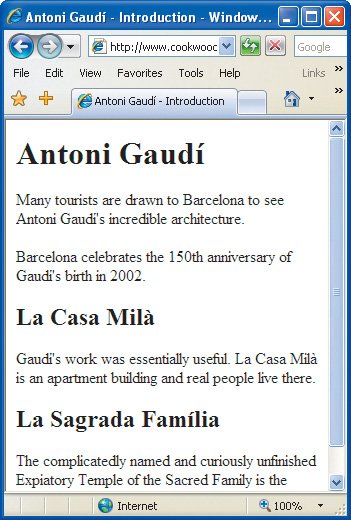Creating Inline Spans
| While you can organize big chunks of your Web page into head and body sections, into divisions, or even with headers (H1, h2, etc.), you can name smaller chunks or spans of text or other inline elements in order to identify them and apply styles to them. To name inline spans:
Figure 3.18. The span tag is used to mark a bunch of inline content. You can then format the marked content however you like (which we'll do in Chapters 10 and 11). Figure 3.19. Again, the span element gives your document underlying structure. You can't see its effect until you apply styles (see page 127). You can see this page with styles on my Web site (see page 26).
|
EAN: 2147483647
Pages: 340


 Tips
Tips